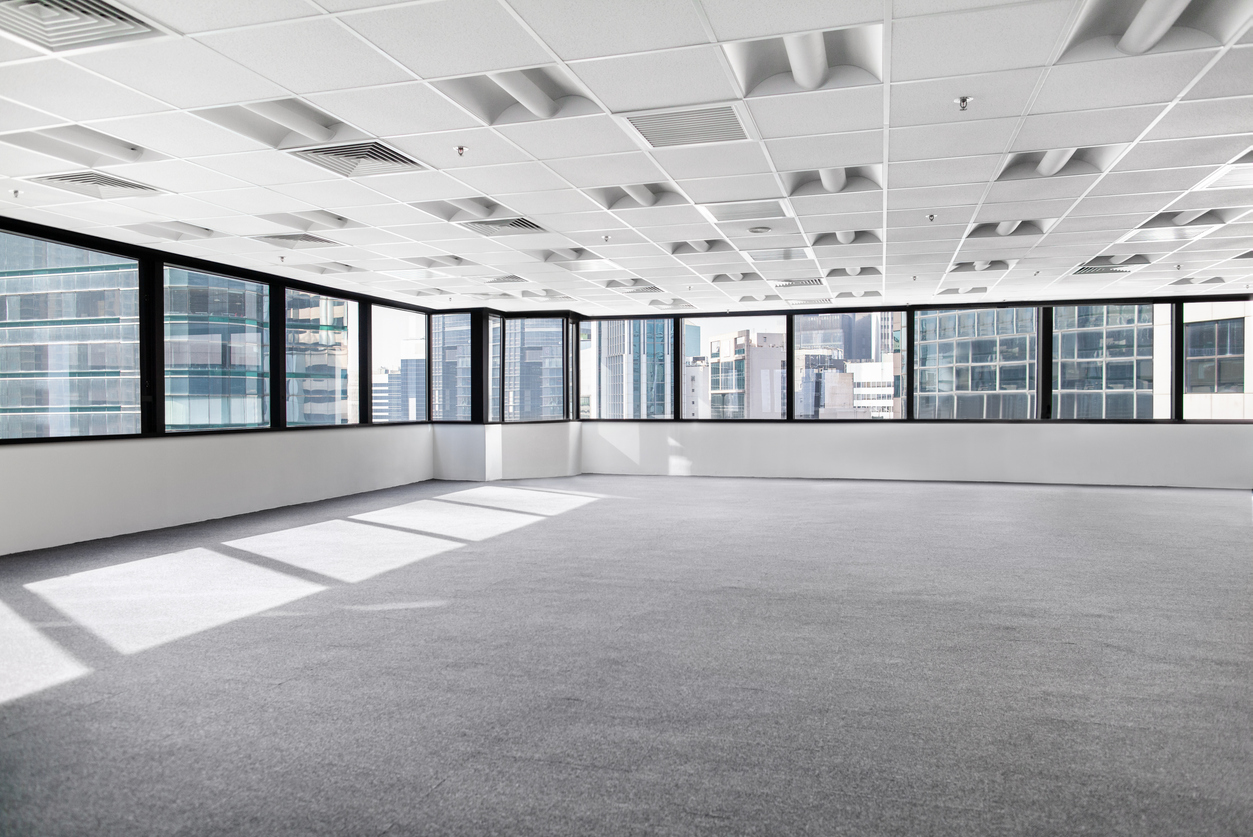The United States has about 15.1 million vacant homes, which represents about 10.5% of the country’s total housing, according to the U.S. Census Bureau. These vacant dwellings are either for sale, rent, or seasonal use.
In 2023, about one-fifth of office space in the country was vacant, according to real estate company Cushman & Wakefield. The vacancy rate for commercial property is mainly due to the shift to remote and hybrid work. Commercial space also remains vacant while new tenants wait to come in. In addition, some buildings remain vacant while plans for repurposing the properties are underway. For example, abandoned factories and office buildings are being transformed into trendy loft apartments, and planning permits and contract negotiations may be waiting to be completed. In the meantime, they sit empty.
When Is a Property Considered Vacant?
Dwelling properties are considered vacant if they are completely empty – that is, there are no people or personal property inside them. Commercial properties are different, as a building is considered vacant unless at least 31% of its square footage is occupied.
Both Homeowners and Commercial Property insurance include vacancy exclusions, which is why Vacant Property insurance is required.
Ensure Vacant Property Insurance Is in Place
Vacant Property insurance covers direct physical loss to the building, including damage from fire, sprinkler leakage, windstorm, hail, and water. It also covers vandalism and theft. At Seneca Insurance Companies, we provide Vacant Property coverage with limits per location of up to $30 million TIV.
Seneca Insurance Companies has no building age restrictions and no length of vacancy restrictions. What also distinguishes us is that clients can have vacant, occupied, or partially occupied properties on one policy.
Risk Mitigation for Vacant Properties Is Critical
It’s important to note that vacant risks differ fundamentally from occupied properties. These risks include vandalism and malicious damage, fire hazards from electrical malfunctions and arson, theft, and water damage. Property owners must implement measures to mitigate these risks, including the following:
- Disconnect all utilities while the property is unoccupied, except where there are existing security systems, fire protection systems, security lighting, or sprinkler systems. Fire and security alarms should be maintained.
- Shut off the water and drain pipes to avoid freezing and possible leakage.
- Maintain the heat at no less than 55 degrees and install water sensors for undrained lines.
- Drain down any oil tanks located on the grounds of the site.
- Recall all keys or change the locks.
- Cut back any trees or hedges to ensure the building remains visible.
- Use external security lighting with a motion sensor option or time switches to deter criminals by making suspicious activity more visible.
- Maintain perimeter fences in good repair and, if damaged, repair immediately. Any gates should be kept locked, preferably using a hardened steel locking bar and a closed shackle padlock.
- Make vehicle access difficult by installing suitable obstacles.
- Remove any combustible waste from the site.
- Monitor and inspect the property regularly.
About Seneca Insurance Companies
Seneca Insurance Companies provides Vacant Property insurance solutions that address each customer’s needs. We insure buildings, dwellings, estates, retail, mercantile, and warehouses.

